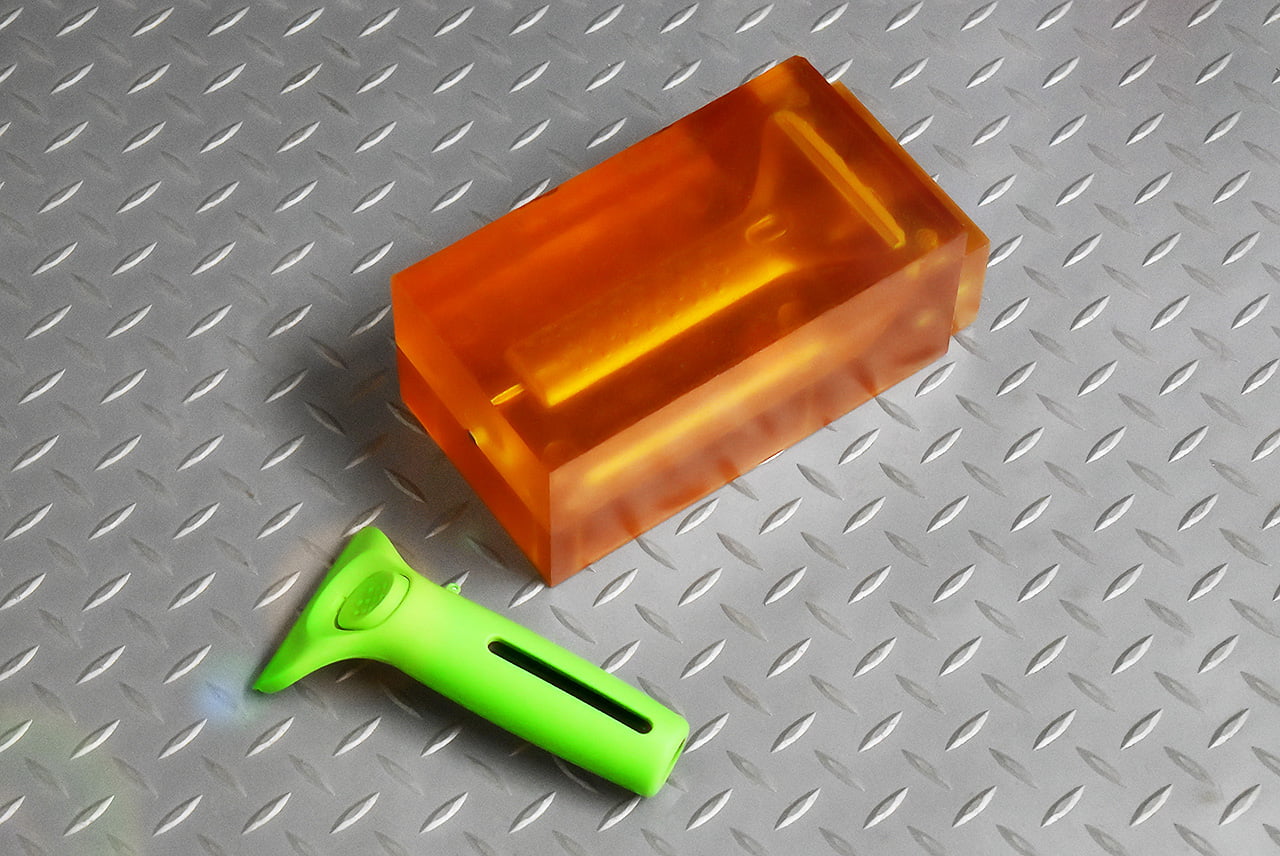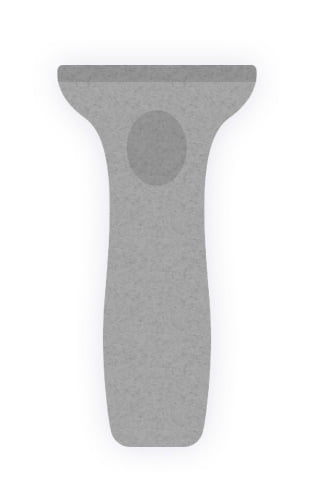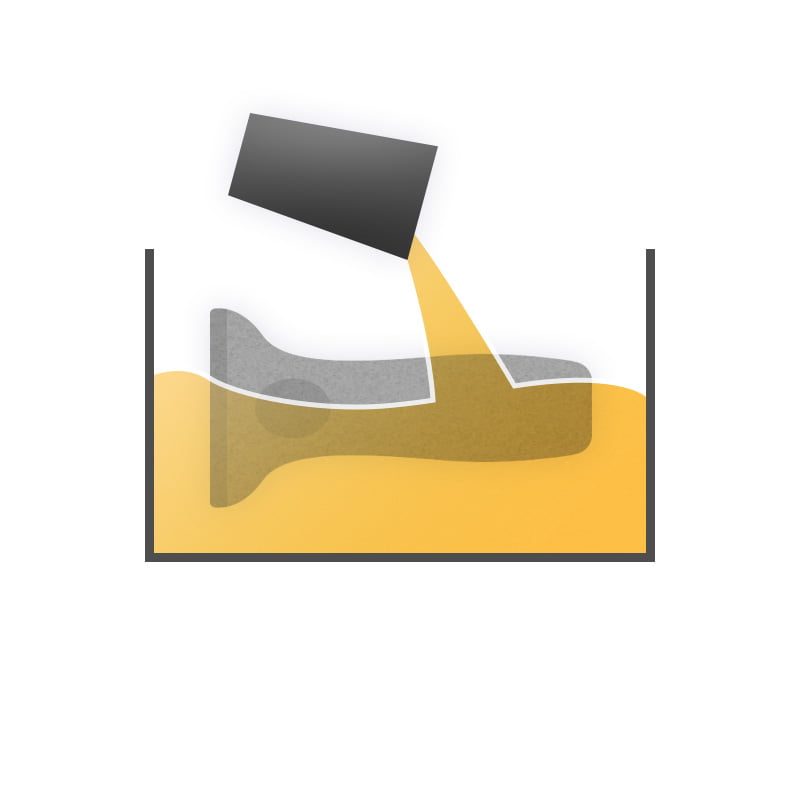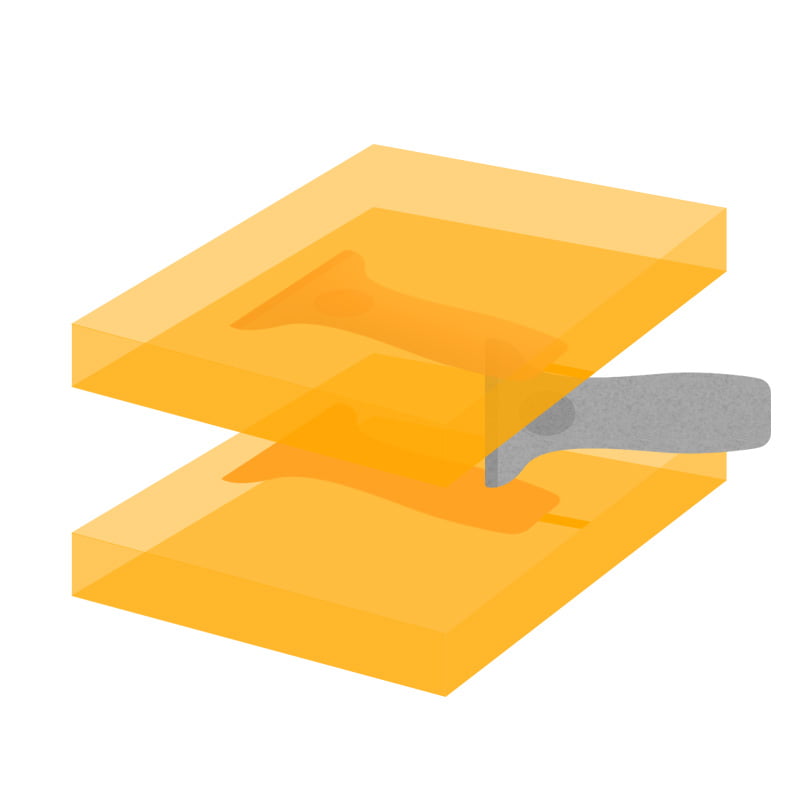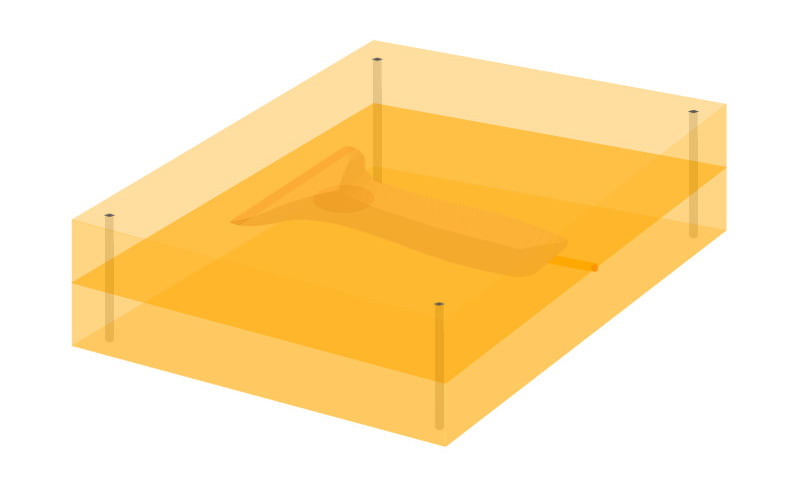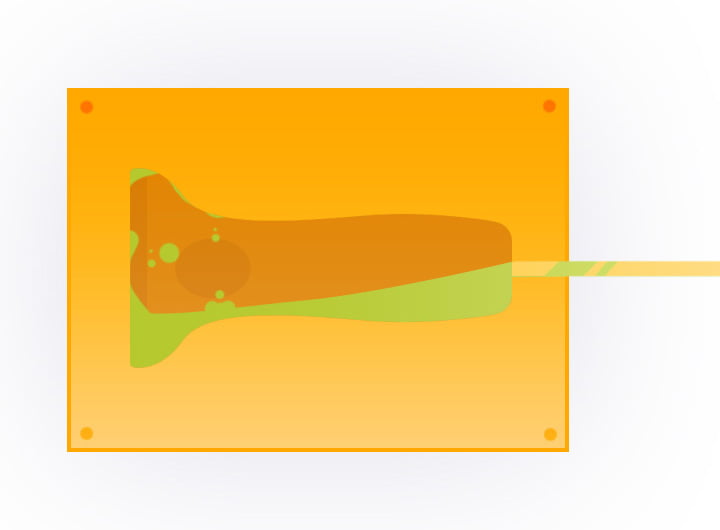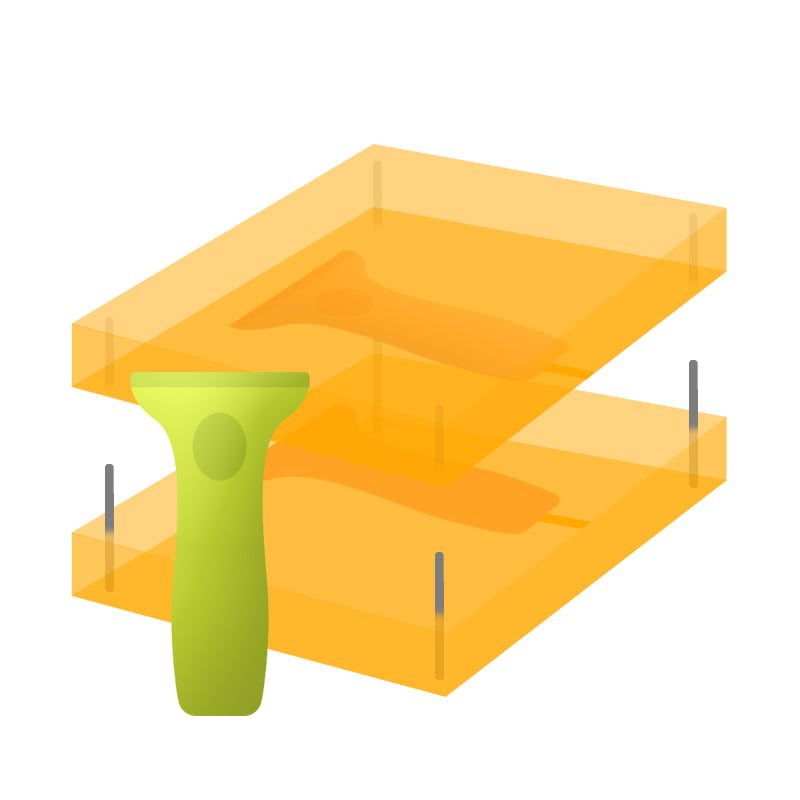This low budget method allows to very quickly produce many plastic replicas from the silicone mold of a master model.
Generally used for prototyping, the possible use of different materials available for injection allows to precisely reproduce the shape, feel (and sometimes properties) of the potential final product.
1. Use a master model like a 3D print or a CNC machining:
2. While the model is elevated inside a box, pour silicone all around it to create a mold:
3. After the silicone dries, cut the mold in half and remove the master model:
4. Temporarily attach the two parts of the mold back together. The mold is now ready for vacuum casting:
5. Pour the chosen plastic solution within the empty space of the mold and place the whole casting frame in a depressurized environment. When normal pressure is restored, the differential force will ensure that the solution will reach all parts of the mold. The mold then goes into a heating chamber for curing.
6. Detach the two parts of the mold and remove the first completed prototype:
As an industrial design firm connected to several manufacturing facilities around the world, SurfaceID has been using this method for different projects. For example, the small size and uni-molded body of the Squee-Kee-Kleen made it a perfect candidate for vacuum casting prototyping.
